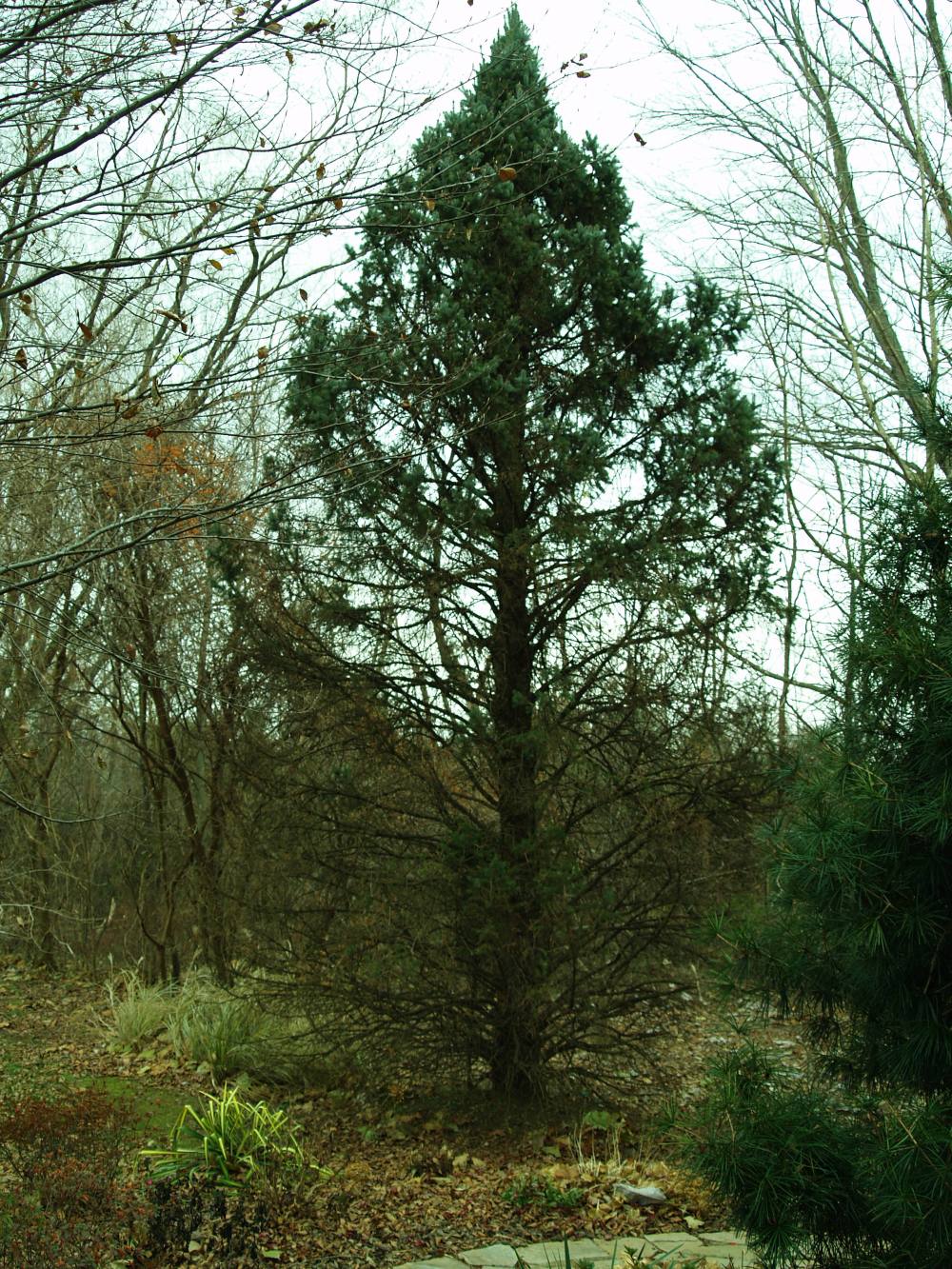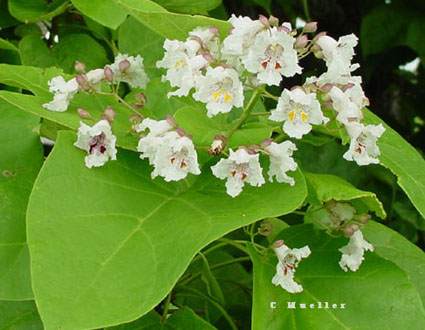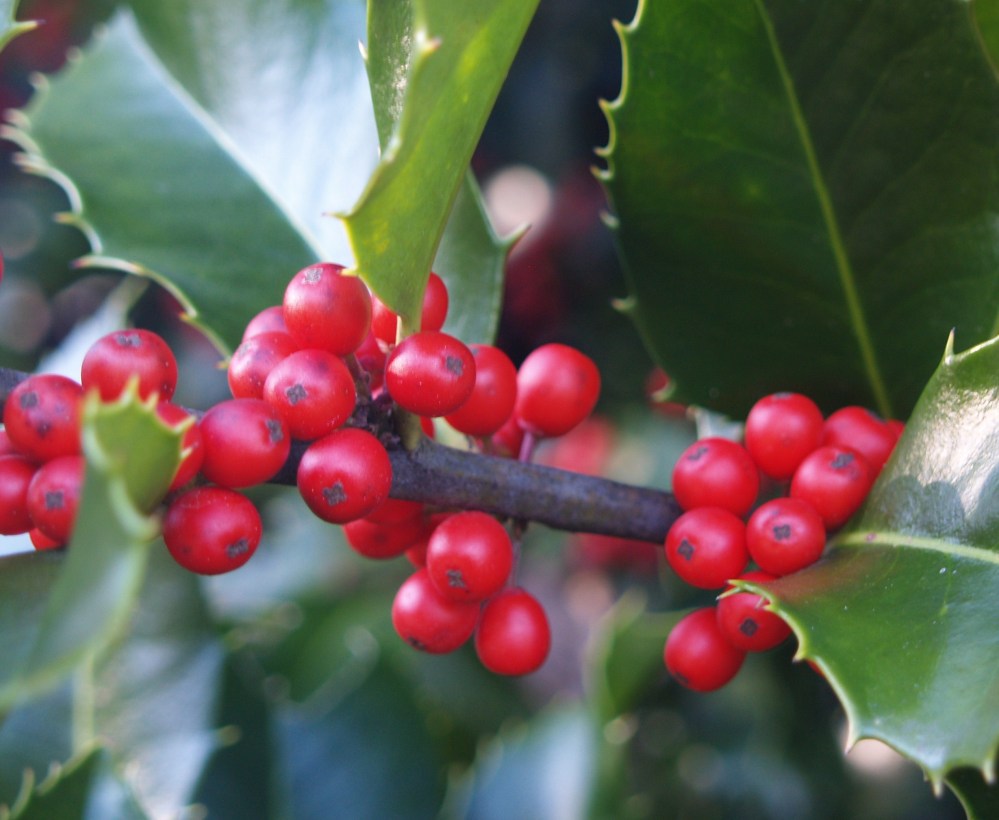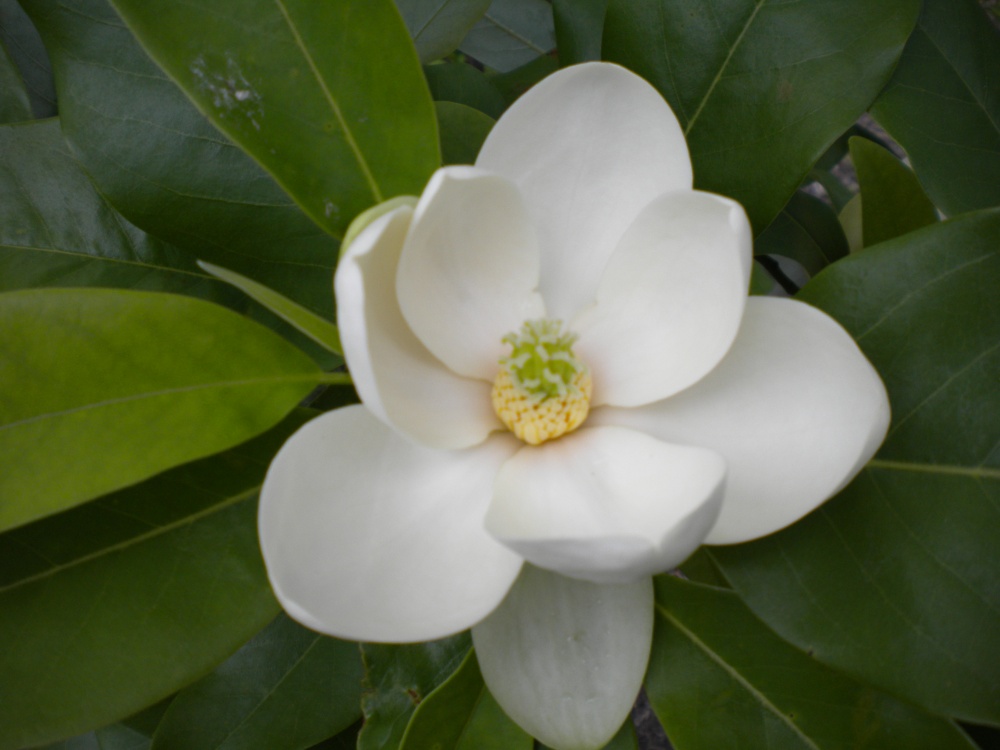The old columnar blue spruce (Picea pungens ‘Fastigiata’) is ready to give up. In twenty years it has gone from nearly full sun to part shade, and the Bigleaf magnolia (Magnolia macrophylla) and a pink flowering ‘Satomi’ Chinese dogwood (Cornus kousa ‘Satomi’) have further crowded it. The lower limbs are nearly bare, and I figure that it’s too much to expect new growth in the spring.
Generally, conifers prefer sun, and it’s not at all unusual for the shaded limbs to gradually decline until there are no needles and the branches die. The tree’s decline could have been forecast a decade earlier, but I didn’t pay much attention until a few months ago. Still, as these things go, I might not do anything about it for another year, maybe longer, though if I get a hankering for something that will suit the spot it could be gone next week. It’s always painful to lose a plant that’s been around for awhile, and it hurts more when the tree is s focal point.
This blue spruce is near the front of the garden, and though lower shrubs and grasses are planted to the front it is readily seen from the street. In fact, most of what can be seen from the road is still alive, though much thinner than it once was. At one time the branches of the columnar spruce were rigidly upright, but heavy snow and ice spread the limbs so that it’s much more open. It’s narrower than other spruces, but it’s not so obvious that it’s a fastigiate form any longer.
When the spruce was smaller I tied the branches together with heavy twine in early winter as a precaution, but as a tree grows taller it’s more difficult to reach to do this, and the best that can practically be accomplished is to jostle the branches with a broom to dislodge snow before they are weighed down. Ice is harder to handle, and most gardeners (at least this one) are not motivated to get out of bed in the middle of the night to bang brooms against spruces, so eventually damage is done and a columnar tree is now just narrow.
I’ll ignore the question as to why the spruce was planted too close to other trees, and in a location that was predictably heading from a sunny exposure to shade. This isn’t the first time, and it’s not likely to be the last. My most notable flaw (among many) when it comes to the garden is a lack of patience so that too many plants are too close, and eventually mistakes must be paid for. The spruce had a good run, but now’s the time to consider, what’s next?
I’ve talked myself in and out of planting a catalpa (Catalpa bignonioides, above) this year, with the locations I considered far too small for a tree that will grow taller than fifty feet. I’ve figured that it might not grow to be a problem in my lifetime, but I don’t want to sell myself too short.
Catalpa is native to much of the southeast, but considered weedy because of its large leaves and coarse, irregular form. It seeds itself about so that where several large trees are found, scattered seedlings are inevitably growing nearby. But, I have a particular fondness for large leaves, and the catalpa’s flowers and long seedpods are quite unique. If only there was more space.
I’ve considered and reconsidered the catalpa for months, but so far the tree hasn’t made it onto the back of a truck for delivery. If good sense has anything to do with it, I won’t plant it. Anyway, the spot is more appropriate for a medium sized evergreen, but one that’s broad leafed to be more tolerant of shade. A large holly, or perhaps a small magnolia would work well, but there are already several of each (and handfuls of hollies, above).
Sweetbay magnolia (Magnolia virginiana, above) could be a good choice. It is partially evergreen, though only a few leaves will persist through an average winter (unless one of the more evergreen cultivars is selected). The multi-trunked tree is more shrub than tree-like, and its ultimate size is appropriate to the space.
Sweetbay is not exactly what I have in mind, but it’s growing on me, so we’ll see. There are a few other gaps in the garden from summer storms and the removal of a grove of bamboo, and it would be prudent to take time to consider all possibilities and to consider the consequences of planting something that grows too large or wide, or requires sun when the area to be planted is shaded. I suppose that it’s fortunate that winter is close, and I’m not highly motivated to be planting anyway, so this will force a bit more thought into the process of selecting a replacement for my declining spruce.
Regretfully, Super Sandy socked our 20yr old, 20ft high Spruce (planted when my grandson was born 20 yrs ago) uprooted and neatly laid it on its side without damaging any other plants on the way down. I had several arborists look at it to see if it could be uprighted. None thought it reasonable. So I cut off the upper 8ft or so and planted it back in the same hole as one last beautifully decorated Xmas tree.